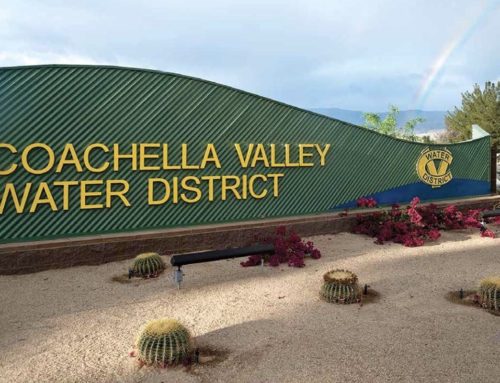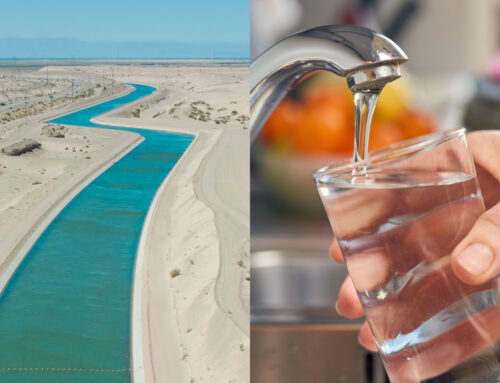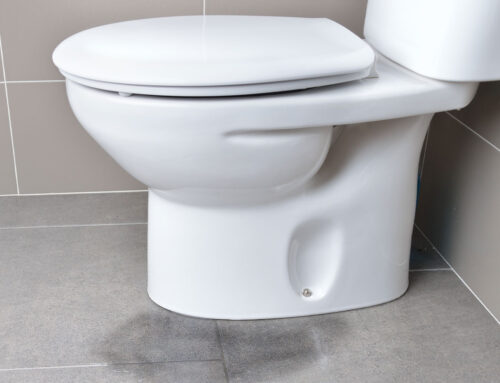According to drought.gov’s National Integrated Drought Information System (NIDIS), drought conditions in 2021 will cause Riverside County to experience its 23rd driest year to date in 127 years. The county will also fall into the Moderate Drought category as of November 2021.
When we claim conservation is a way of life, we must also understand that the Coachella Valley region is in a constant state of drought.
But, what does it mean when we hear the word “drought”?
Defining Short- and Long-Term Drought1
If a weather pattern that results in a precipitation deficit lasts for a few weeks or months, it is considered a short-term drought. If the weather pattern and precipitation deficits last for more than six months, it is typically considered long-term drought.
It is possible to have temporary changes that result in wet spells during a drought, and for wet conditions to be interrupted by weather patterns that result in short-term drought.
The Impacts of Short-Term Drought 2
During short-term drought, declines in surface water flows can impact water supplies for agriculture, navigation, drinking water, hydropower production, recreation, and ecosystem habitats.
In contrast, it may take a year or more before [water] levels in wells (reflecting groundwater levels) reflect a shortage of rainfall. However, groundwater use often increases during drought from increased pumping to meet water demands. If water is pumped at a faster rate than the underlying aquifer is recharged from precipitation or other sources, water levels can drop, resulting in decreased water availability and deterioration of groundwater quality.
The Impacts of Long-Term Drought 3
During long term-drought increased groundwater pumping is needed to meet water demand during drought which can lead to aquifer depletion. This can lead to subsidence (sinking of the ground), permanent loss of storage for groundwater, and infrastructure damage.
In coastal communities, groundwater pumping can reverse natural flows to the ocean, allowing seawater to enter the aquifer system (known as saltwater intrusion). This compromises water quality and increases management costs.
Water allocations for ecosystems and various restoration projects could be reduced or stopped altogether during severe drought.
How does Drought affect the Coachella Valley 4
The Coachella Valley’s annual average of 3 inches of rain along with snowmelt from surrounding mountains is not nearly enough to naturally replenish what is pumped from the local groundwater basin to meet water demands. Consequently, the Coachella Valley groundwater basin is in overdraft; we currently pump out more from the aquifer than we percolate back in. Read the CVWD-DWA The State of the Coachella Valley Aquifer (PDF) for more information.
The Coachella Valley is fortunate to have several groundwater replenishment facilities that has percolated a billion gallons of water back into the aquifer. The Coachella Valley Water District and Desert Water Agency oversee four groundwater replenishment facilities. Artificial replenishment, or recharge, is one of the most effective methods available for preserving local groundwater supplies, reversing aquifer overdraft and meeting demand by domestic and commercial water consumers. CVWD has been replenishing the Coachella Valley Groundwater Basin (Basin) in Whitewater with natural flow, snowmelt, and beginning in 1973 with imported water as part of cooperative program with the Desert Water Agency.
What You Can Do
To help reduce the effects of drought, there are many things county residents can do. Individuals and families can reduce their household’s water usage, especially outdoors, to make the biggest impact on groundwater overdraft. Businesses and workplaces can also conserve water significantly by repairing leaks and managing their outdoor water use. For more tips, please visit our conservations tips page.
These tips, along with many others, will be presented at the CV Water Counts Academy in 2022. The academy will consist of five weekday sessions, held online on every Thursday in February from 12-1:30 p.m. One final virtual tour session will take place on Thursday, March 3, from 12-1:30 p.m.
Visit CVWaterCounts.com/Academy for more information and to apply to the academy. Applications are being accepted from now until January 21 for the February 2022 class. There is no tuition/fee.
1 https://www.drought.gov/what-is-drought/drought-timescales-short-vs-long-term-drought
2 https://www.drought.gov/what-is-drought/drought-timescales-short-vs-long-term-drought
3 https://www.drought.gov/what-is-drought/drought-timescales-short-vs-long-term-drought
4 http://cvwd.org/162/Groundwater-Replenishment-Imported-Water






